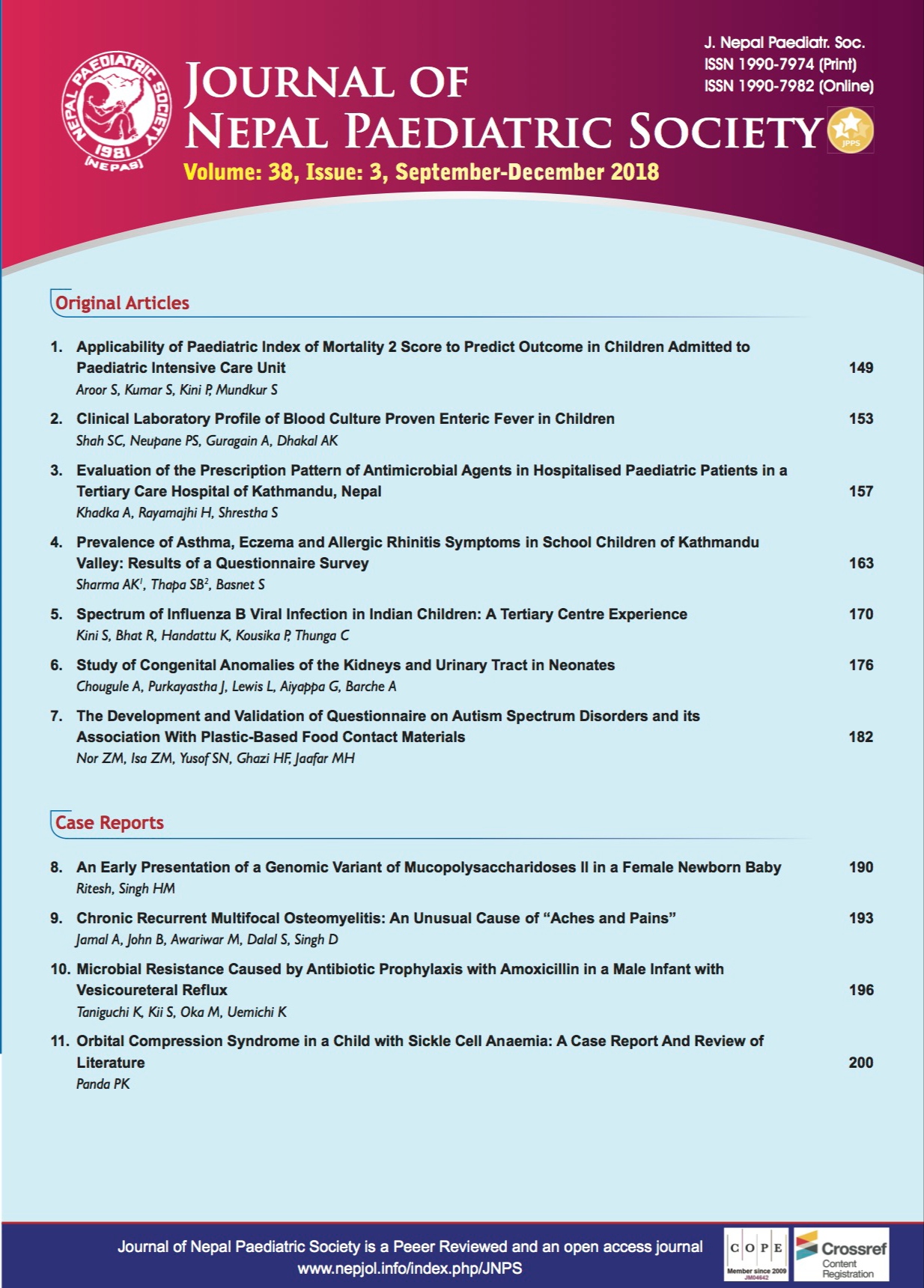Orbital Compression Syndrome in a Child with Sickle Cell Anaemia: A Case Report And Review of Literature
DOI:
https://doi.org/10.3126/jnps.v38i3.19328Keywords:
sickle cell disease, orbital compression syndromeAbstract
Vaso-occlusive crises in sickle cell disease commonly involve bone marrow of the long bones and vertebrae. Involvement of bones with less marrow space, including the bones of the orbit, is reported rarely in the literature. The present case is a six year old boy, a known case of sickle cell disease, who presented with acute onset right upper and lower eyelid swelling, restriction of extraocular movement and pain. USG orbit showed a retro-orbital haemorrhage compressing on the orbit, probably due to orbital bone infarction. The child was managed successfully with red blood cell transfusion and intravenous antibiotics, without steroids and surgical intervention. This report highlights the importance of maintaining a high index of suspicion in patients with known sickle cell disease presenting with pain, orbital swelling and restriction of ocular movement. Timely red blood cell transfusion only may be sufficient for uneventful recovery, without steroids or surgical intervention. Expedient diagnosis of orbital compression syndrome in children with sickle cell disease is crucial because this is a potentially sight-threatening entity.
Downloads
Downloads
Published
How to Cite
Issue
Section
License
Authors who publish with this journal agree to the following terms:
Authors retain copyright and grant the journal right of first publication with the work simultaneously licensed under a Creative Commons Attribution License that allows others to share the work with an acknowledgement of the work's authorship and initial publication in this journal.
Authors are able to enter into separate, additional contractual arrangements for the non-exclusive distribution of the journal's published version of the work (e.g., post it to an institutional repository or publish it in a book), with an acknowledgement of its initial publication in this journal.
Authors are permitted and encouraged to post their work online (e.g., in institutional repositories or on their website) prior to and during the submission process, as it can lead to productive exchanges, as well as earlier and greater citation of published work (See The Effect of Open Access).



